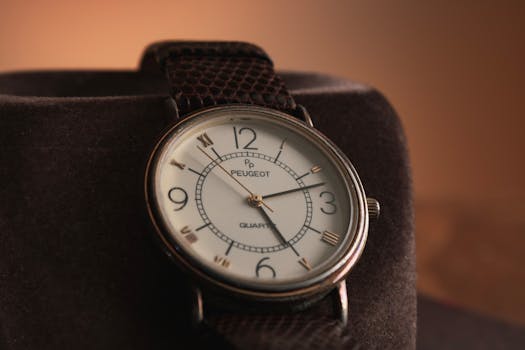The Quartz Revolution: Transforming Traditional Watchmaking
Takeaways: Quartz technology has significantly altered the landscape of traditional watchmaking by enhancing precision, reducing production costs, and shifting consumer preferences towards digital functionalities. This article explores the profound impact of quartz movements on the art of horology, the evolution of watch designs, and the luxury market’s response.
Since the introduction of quartz movements in the late 20th century, the watchmaking industry has undergone a seismic shift. This innovation has challenged the traditional craftsmanship of mechanical watches and redefined what consumers expect from timepieces.
The Birth of Quartz Technology

The first quartz watch, the Seiko Astron, was released in 1969, marking a turning point in horology. Using a quartz crystal to regulate time, these watches achieved remarkable accuracy, diverging from the typical mechanical variance of a few seconds per day to mere fractions of a second per month.
Quartz technology operates by oscillating a quartz crystal at a precise frequency when an electrical current is applied. This consistency allows quartz watches to maintain accuracy that far exceeds their mechanical counterparts. As a result, quartz watches quickly gained popularity among consumers who valued precision and reliability.
The Impact on Traditional Watchmaking

This democratization of watch ownership meant that high-precision timepieces became accessible to a broader audience. As production costs decreased, manufacturers could offer quartz watches at various price points, from affordable models to luxury brands that integrated quartz movements into their lines.
As quartz gained traction, traditional watchmakers faced a dilemma. Many chose to adapt by incorporating quartz technology into their offerings, creating hybrid models that combined the elegance of mechanical designs with the accuracy of quartz movements. This shift not only preserved the legacy of traditional craftsmanship but also expanded the market for luxury watches.
The Luxury Market’s Response

Additionally, the introduction of quartz technology led to innovations in watch design. Designers started to experiment with new materials and styles, resulting in diverse collections that appealed to various tastes. The versatility of quartz movements enabled manufacturers to create slimmer, more lightweight watches that catered to modern sensibilities.
Furthermore, the rise of smartwatches has further complicated the landscape of traditional watchmaking. While some luxury brands have sought to merge traditional aesthetics with modern technology, others have doubled down on mechanical movements, positioning themselves as purveyors of timeless craftsmanship in a world increasingly dominated by digital devices.
Challenges and Opportunities Ahead

Ultimately, the impact of quartz technology on traditional watchmaking is undeniable. It has reshaped consumer expectations, influenced design philosophy, and forced the industry to evolve. As we move forward, the interplay between quartz and mechanical technologies will likely continue to define the future of horology.



